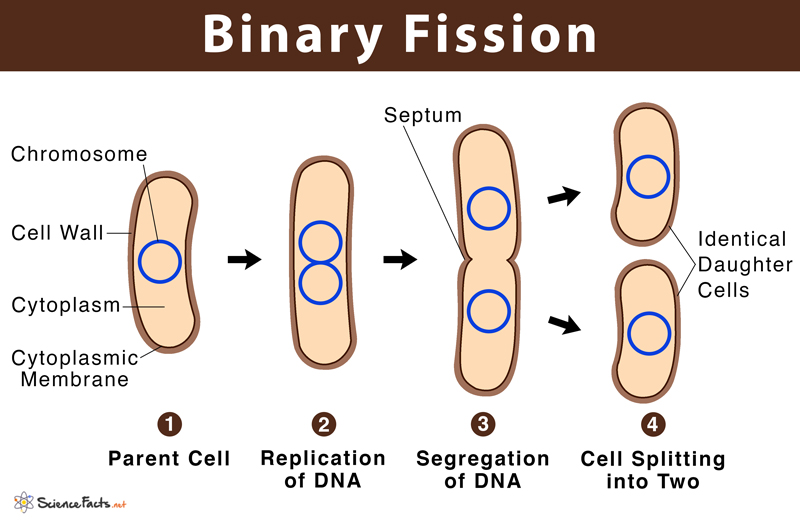Examples of cells that use binary fission for division Bacteria, archaea, and cyanobacteria (prokaryotes), as well as amoeba and Paramecium (eukaryotes) use binary fission as their primary mode of reproduction. Some cell organelles like mitochondria also undergo cell division by this process. For example, the bacterium E. coli typically divides once every 20 minutes at 37 °C, so an entire population can become double in that time and temperature. This can be practically related in cases of food spoilage where nutrients and moisture present in the food stimulates bacterial growth through binary fission, eventually making the food unsuitable for consumption.
Binary Fission in Eukaryotes
It is not as common in eukaryotic cells as it is in prokaryotes. The process is also much more complex in the former due to the presence of large genetic material and many cell organelles. However, the main steps are the same as described in prokaryotes, involving the FtsZ protein.
It is a fast processIt only requires a single organism instead of two mating partners, for reproduction to happen
Disadvantages
No variation in reproduction and thus all cells are identical with the same genetic informationIncapable of adaptation, which increases the risks of extinction for the organism
